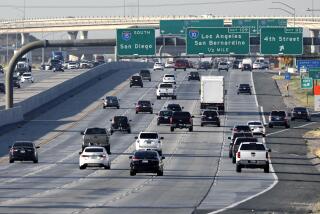$2 Million Budgeted to Design Otay Border Addition
A long-awaited expansion of the commercial border facility at Otay Mesa in San Diego moved one step closer to reality Tuesday when a congressional subcommittee budgeted $2 million for design, said U. S. Rep. Bill Lowery, R-San Diego.
Lowery said the congressional panel directed the U. S. Customs Service and the General Services Administration to begin formal studies of a new coastal-area border crossing between the Playas de Tijuana neighborhood and Imperial Beach.
A spokeswoman for the congressman described the planned study, which would examine the feasibility, cost and environmental impact of such a facility, as a “first formal step” in a still-embryonic effort to install a third border crossing between Tijuana and San Diego.
The third-crossing concept remains many years away from reality. Still needed are formal approval from the U. S. and Mexican governments, plus funding commitments from both sides.
The Otay expansion, however, has already been agreed upon by both governments and could be operating as early as 1992, the spokeswoman said. The plan is to double the 52 truck inspection docks now being utilized at Otay Mesa, destination of all commercial road shipments from Mexico to San Diego. The $2 million budgeted Tuesday will pay for design of the dock space.
The House Appropriations subcommittee for Treasury and postal affairs, of which Lowery is a member, included the funds in a broad budget bill that is expected to receive full committee approval this week.
The overall cost of the expansion at Otay Mesa is estimated at $23.3 million. About $6.5 million has already been spent to buy 16 acres next to the existing crossing.
Long delays entering the United States are frequent at both of San Diego’s land-border crossings--at Otay and San Ysidro--and traffic at the two crossings has been rising dramatically. In the past year, Lowery said, U. S. Customs reported a 26% increase in truck traffic, a 19% increase in passenger vehicle entries and a 74% rise in pedestrian traffic at the two U.S.-Mexico ports of entry.
More to Read
Sign up for Essential California
The most important California stories and recommendations in your inbox every morning.
You may occasionally receive promotional content from the Los Angeles Times.










